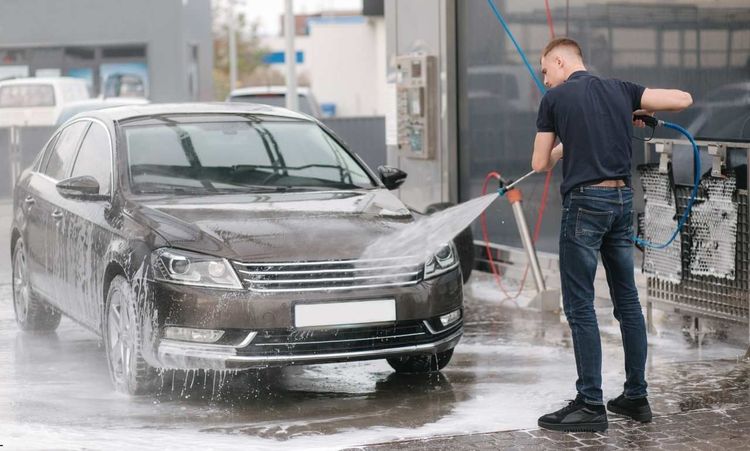Introduction
Winter can be brutal. Not just on your fingers and toes—but on your car battery too. Cold weather doesn’t mix well with batteries. As the temperature drops, so does your battery’s power output. You may turn your key and hear nothing but a weak click. That’s the sound of winter winning.
Most people think their battery died out of nowhere. But the truth is, batteries usually give warning signs. Dimming headlights. Sluggish starts. A faint smell of sulfur. These small signs often go unnoticed until you’re stranded in a freezing parking lot.
This guide will walk you through how to avoid a dead car battery in the winter. You'll learn what to check, what to clean, and what gear can help. Even if you're not a mechanic, these are things you can do yourself or ask your local auto shop about.
Check the Age of Your Battery
Car batteries don’t last forever. In fact, most of them tap out after three to five years.
Cold weather slows down the chemical reactions inside your battery. This reduces its power to start your car. If your battery is already nearing the end of its life, the cold can push it over the edge.
Want to know how old your battery is? Look for a sticker on the battery case. It usually shows the manufacturing date in a code. For example, a label that says “C21” means the battery was made in March 2021.
If your battery is older than three years, get it tested. Auto shops like Firestone, Canadian Tire, or local garages often test batteries for free. It’s quick, and it can save you from freezing by the roadside.
Clean Off Corrosion Around the Terminals
Before you blame the battery, take a look under the hood.
White or greenish gunk around the battery terminals? That’s corrosion. It forms when battery acid reacts with metal terminals. This build-up can block the flow of electricity, making your battery seem weaker than it is.
Here’s where it gets tricky. Even a fully charged battery might not start your car if the terminals are too corroded. Cleaning them is easy, though. Just mix baking soda with warm water, grab an old toothbrush, and scrub. Make sure the engine is off before you touch anything.
You can also use a wire brush or buy a terminal cleaner from an auto parts store. Don’t forget to tighten the clamps when you’re done. Loose connections can cause problems too.
Install a Battery Blanket
Freezing temperatures can be brutal on battery health.
A battery blanket wraps around your battery and gently warms it. Think of it like an electric blanket, but for your engine. These blankets plug into a standard outlet and keep the battery at a safe temperature overnight.
You can find one at places like Amazon, Canadian Tire, or your local auto parts store. Brands like Schumacher and DieHard offer reliable options.
Some vehicles—especially diesel engines—struggle more in cold weather. A battery blanket can make all the difference. In places like Northern Ontario or the upper Midwest, this isn’t just a luxury. It’s survival.
Don’t confuse this with a block heater. A block heater warms your engine oil, not your battery. They serve different purposes but work great together in cold climates.
Limit Your Use of Accessories That Strain the Battery
Heated seats, GPS, phone chargers, and even your radio pull power from your battery.
When you start the car, all of these accessories create an extra load. Your battery is already working hard to start the engine in the cold. Adding more stress only shortens its life.
Turn off accessories before starting your car. Let the engine run for a few minutes before switching them on. This gives the alternator time to charge the battery.
Short trips are also a problem. Your battery needs time to recharge after each start. If you're driving five minutes to the store, the battery never fully recovers.
Try bundling errands into one trip. Or, take your car for a 20-minute drive once a week. That quick run to the gas station isn’t doing your battery any favors.
Keep Your Battery Charged
Cold weather slows everything down—including your battery’s ability to hold a charge.
If your car sits for long periods, the battery can drain. This is called parasitic drain. Interior lights, alarm systems, and even dashboard clocks can slowly pull power over time.
To fight this, consider using a battery maintainer or trickle charger. These devices keep the battery at full charge without overloading it. They’re especially useful if your car sits unused during the week.
Just make sure to choose the right model. Some are made for lead-acid batteries, while others work with AGM or LiFePO₄ types. Schumacher and CTEK make reliable units that are easy to install and monitor.
No outlet in your garage? A solar-powered charger may be worth considering. It’s not a perfect solution, but it can slow down battery drain.
Get Your Battery a Check-Up Before It Checks Out
It’s better to find a problem in your driveway than in a parking lot.
Before winter hits hard, get a battery health check. This includes checking voltage, cranking amps, and internal resistance.
Most modern shops use handheld diagnostic tools. You’ll get a printout showing how your battery performs under load. If it's weak, replace it before it fails.
Keep in mind that newer vehicles have more electronics. These place added stress on your battery. Even something like an infotainment system can be enough to tip a weak battery over the edge.
Don’t wait for a “check battery” light to come on. Many batteries fail with no warning at all. An early check-up can save you time, money, and a lot of cold frustration.
Personal Experience: Learning the Hard Way
It was one of the coldest days in January when my car wouldn’t start. I turned the key, and it just clicked. No engine. No warning.
A friend came to jump-start it, but it took two tries. I ended up replacing the battery, and it wasn’t cheap.
What did I learn? My battery was over four years old, and I hadn’t checked it. There was also corrosion on the terminals. I had been using heated seats and charging two phones every day. Looking back, I ignored every sign.
Since then, I check my battery every fall. I use a maintainer when I don’t drive much. And I clean the terminals monthly during the winter. That one cold morning taught me more than any manual ever could.
Conclusion
Winter doesn’t have to ruin your morning. Taking just a few simple steps can save you from dealing with a dead car battery.
Start by checking the age. Clean the terminals. Add a battery blanket if you live where temperatures fall below freezing. Reduce stress by limiting accessory use. Keep your battery charged, especially if your car sits for long periods.
And don't forget that quick check-up at your local shop. A diagnostic test might seem unnecessary—until the day your car doesn’t start.
How to avoid a dead car battery in the winter? Stay one step ahead of the cold. Your future self will thank you.




